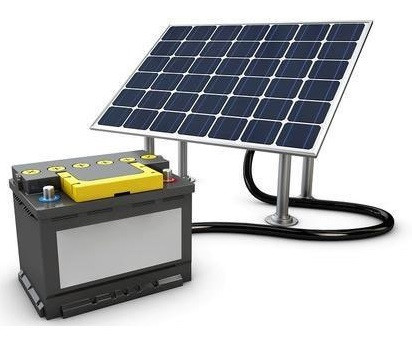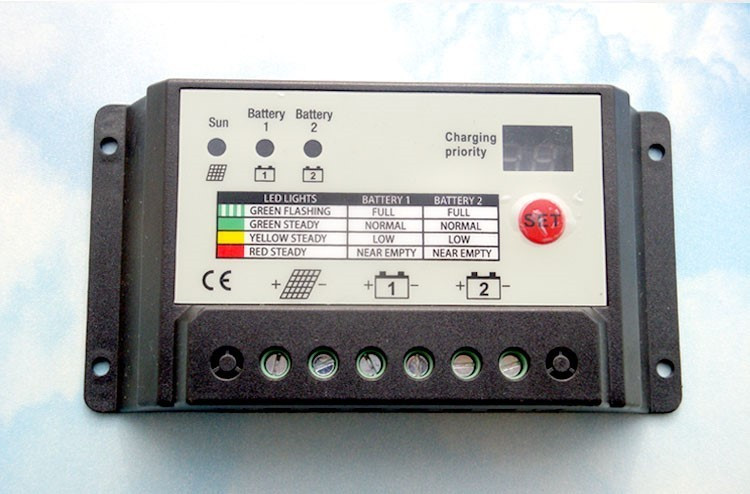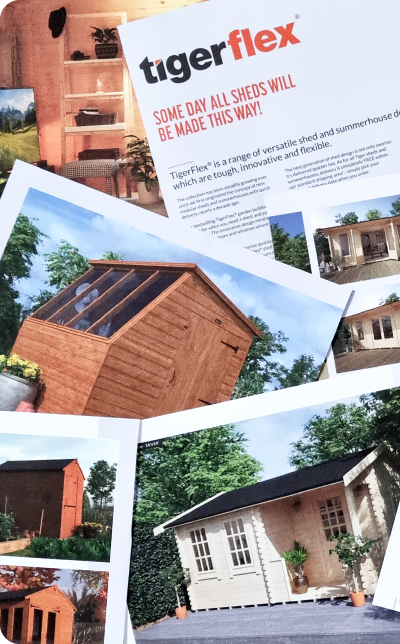Solar Panels for Sheds: What You Need to Know
Published: 03/08/2021

Solar panels for sheds are becoming increasingly popular. And that's understandable when you consider how economical and eco-friendly they are. That said, they still provide an electrical supply – and that’s why you must make sure you do everything right. As we state in our post on how to supply electricity to a garden shed, electricity can be dangerous, so it’s important to stay safe during both installation and use. Are you looking for a convenient and cost-friendly way to power your summerhouse lighting? Perhaps you want to know whether it’s worth putting solar panels on your shed at all. Or maybe you just want to know how many watts you need for a solar-powered shed in the UK. In this post, we aim to answer these questions…
The pros and cons of solar panels on sheds

Before installing any kind of solar energy in your shed (or log cabin or summerhouse) in the UK, you need to weigh up the pros and cons:
Pros
- Reduces operating costs
- Good return on investment
- Eco-friendly
- Gives you some control over your energy bills
- You could make money from your surplus energy
Cons
- Expensive initial investment
- Your shed must strong enough to take the extra weight (solar panels)
- The building needs to big enough to house the inverter
- The panels need to face south, east or west (ideally south)
As you can see, there are several attractive potential benefits to installing solar power in your shed – not least the fact that it could save (and even make) you money. But obviously, this comes with a sizeable investment, so you must consider you think it’s worth your time, effort, and initial cost. Fortunately, solar panels are available in different sizes, so that could help reduce some of the initial costs – although you need to make sure whichever method you use provides enough electricity for your needs (more about this later).
Is it worth putting solar panels on my shed?

While it’s clear by now that you can power a shed with solar panels in the UK, the question of whether it’s worth doing so is a legitimate one. Here are some of the factors you need to consider:
- What you use your shed for
- How much power you need
- The size and age of the shed
- The strength of the roof
- The position of the building
- Your budget
In terms of how you use – or intend to use – your shed, if you spend lots of time in there and need electricity to power lights, appliances, gym shed, or garden office equipment, then solar panels could be a money-saving (and eco-friendly) alternative to mains power. Especially if you need solar panels for shed heating or summerhouse lighting (for example). Likewise, the amount of solar energy you need will depend on how you use the shed (more about this in the next section). The decision as to whether it’s worth putting solar panels on your shed will also depend on the strength and age of your garden building. For example, if you have an old shed with a weak or sunken roof, there’s no point in adding solar panels – unless, of course, you buy a new shed (or another type of garden building).
Can I put solar panels on my shed roof in the UK?
This may seem like a ridiculous question considering this post is about solar panels for sheds; we've already established that it's legal to put your solar panels on your shed roof in the UK. But you need to make sure your shed roof is strong enough - solar shed structure is all-important. In other words, you shouldn’t just buy any new shed. To be able to hold up the solar panels, the building should be made from materials that are unlikely to buckle under the weight. With this in mind, we don’t recommend trying to add solar panels to a cheap shed made from flimsy OSB board – it just won’t last!
Understanding solar panels for sheds
In this section, we take you through all the devices (and their associated terms) and how they work.
How do solar panels work?

Solar panels contain photovoltaic (PV) cells, which absorb sunlight and convert it into direct current (DC). The DC then passes through an inverter (inside the shed) and converts into alternating current (AC), which is then used to power your shed. Now you know how solar panels power your shed, let’s look at the key devices you need to know about:
AC outlet
Used with smaller systems. This connects to the battery and is used to power small appliances. – such as a laptop or smartphone.
Battery

It may seem strange that a solar-powered shed would require a battery. Surely, the solar panels are the power source, right? Well, yes and no. While solar panels generate the power (with the help of the inverter and cables), the battery stores the energy for later use. Specifically, solar units need a deep cycle battery, which is otherwise known as a deep discharge battery.
Cables

The cables feed the DC current from the solar panels to the inverter. To ensure maximum efficiency and safety, you must make sure the cables you use have the correct rating for your system. To work this out, use the DC Cable Sizing Tool at solar-wind.co.uk [1].
Charge controller

Regulates the power coming from the panel and stops the battery from overcharging (or running completely flat). The charge controller also features a temperature sensor – the controller will shut off the system if the ambient temperature gets too hot. This, in turn, helps boost (and maintain) the efficiency of the battery.
Inverter

The inverter converts the direct current (DC) power (generated by the solar panels) into alternating current (AC). Alternating current is the standard type of electricity required to power electrical circuits in the UK.
How many watts do you need for a solar-powered shed in the UK?

Again, the amount of electrical devices you use will determine the amount of power you need, which, in turn, will determine the size of the panels you require – and therefore how much it will cost. Photonicuniverse.com provides a chart that matches the amount of power (watts) typical pieces of equipment will use and matches it to the continuous power rating of the inverter. Here are some typical ratings for types of equipment you may need in your solar-powered shed (according to Photonic Universe) [2]: Mobile phone charger: 5W Halogen light: 100W Desk lamp: 50W Desktop computer (with 17” monitor): 400w Commercial printer: 800w Laptop: 50w 42” LCD TV: 200W Electric oven: 5000W Obviously, you may not need to use all the equipment listed above in your shed; these are just examples you might use in your man cave shed, live-in shed, or garden office. Armed with this information, you can then work out how powerful your solar power shed kit needs to be. For example, if you want to use a laptop (50W), a mobile phone charger (5W) and a desk lamp (50W), you need 105W of total power – but wait! To ensure you have the best solar panel kit for your UK shed, we recommend using an inverter that provides both 20-50% more than the minimum total power you need AND more than twice the amount of power of the most power-hungry piece of equipment. With this in mind, we would recommend a 160W system for this purpose (solar panel kits in the UK tend to have round-numbered power ratings). By ensuring you have more than enough power available to power all your equipment, you'll boost efficiency and help prevent faults occurring in the solar panels on your shed.
What size solar panel do I need for my shed?
The size of each solar panel you need depends on what you want to achieve. If you have an average-sized shed or log cabin, a single 50-watt panel solar kit may be enough. But if you want underfloor heating - which would be a real luxury for any shed - you're likely to need at least three 150W solar panels.
Solar panels for sheds: how much roof space do you need?

However, you should bear in mind that if you wish to live in your garden building, you’ll need adequate shed roof space for all the solar panels you’ll need. For example, let’s say you live in the garden building and you need 4kW of power per day – that means you’ll need 16 (sixteen) 250W panels and 25.6m² of space on your roof [3]. This means that something like the Omega log cabin would be a more viable option (for providing enough power for a live-in shed) than a building designed as a storage shed, for example.
References
[1] https://www.solar-wind.co.uk/info/dc-cable-wire-sizing-tool-low-voltage-drop-calculator [2] https://energyusecalculator.com/index.htm [3] https://www.greenmatch.co.uk/blog/how-many-solar-panels-do-i-need












